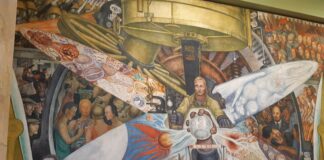
Socialistisk Biblioteks Tidslinje med links til begivenheder og personer i 1797.
Se også Index over personer, organisationer/partier og værker (som bøger, malerier, mm.), steder, begivenheder, mv., der er omtalt på hele Tidslinjen, titler og indhold på emnelisterne osv.
27. maj 1797
Den franske revolutionære Gracchus Babeuf henrettes i Paris som ansvarlig for “De Liges Sammensværgelse” (født 23. november 1760).
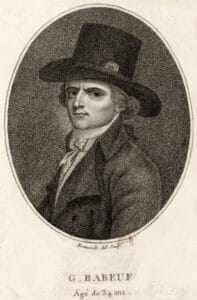
Se:
- Babeuf, Gracchus (Leksikon.org)
- François-Noël Babeuf (Wikipedia.org)
- Gracchus Babeuf and the Conspiracy of the Equals (Marxists Internet Archive; History of the French Revolution). Documents by Babeuf etc.
Gracchus Babeuf revisited. By Doug Enaa Greene (RS21: Revolutionary Socialism in the 21st Century, September 7, 2017). Review of Ian Birchall, The Spectre of Babeuf (Haymarket, 2016, 180 p.). “Ian Birchall provides a welcome corrective to the neglect of Babeuf by giving him the respect he deserves as a participant in the French Revolution and as an original socialist thinker …”
Day of the people: Gracchus Babeuf and the communist idea. By Doug Enaa Greene (Links: International Journal Of Socialist Renewals, February 20, 2013). “Babeuf was a revolutionary thinker and actor who was communist without having had a concept of capitalism as such.” Longer article (with 318 notes + bibliography with links).
The Babeuf bicentenary: conspiracy or revolutionary party? By Ian Birchall (International Socialism, Issue 72, Autumn 1996, p.77-93). “Was it a hopeless act of a desperate minority? Was Babeuf’s organisation the forerunner of the Leninist party?”
Neither Jacobin nor Utopian: Marx, Engels and Babeuf. By Ian Birchall (Grimanddim.org, 1996). “The present period is one in which it is vital to reassess the whole socialist tradition, starting with the man who in many ways stands at its very beginning, Babeuf.”
Morris, Bax and Babeuf. By Ian H. Birchall (The Morris Society Journal 1996; online at Marxists Internet Archive). “A century separates Morris’s death from Babeuf’s ‘Conspiracy of the Equals’, arguably the first revolutionary socialist organisation in history. But there is more than a coincidence of dates linking two great pioneers of socialist thought and practice; there is an interesting and, as far as I know, little discussed connection between the two men.”
Thoughts on the defense of Gracchus Babeuf (1969). By Herbert Marcuse (Marxists Internet Archive). “Babeuf’s Defense before the High Court at Vendôme tries to achieve the impossible: recognition, by the established authority, of extreme civil disobedience as a legitimate protest against established authority.”
The Conspiracy of Equals and the birth of communism (Socialisme ou Barbarie, Issue 2, May-June 1949; online at Libcom.org). “Jean Léger examines the history of Gracchus Babeuf and his ‘Conspiracy of Equals’, a communist organisation which emerged during the French Revolution.”
The Last Episode of the French Revolution: Being a History of Gracchus Babeuf and the Conspiracy of the Equals. By Ernest Belfort Bax (Marxists Internet Archive; Library). Book, 1911, 271 p.
Se også:
The first modern Socialists. Chapter 2 in Hal Draper: The Two Souls of Socialism (New Politics, Vol. 5, No.1, Winter 1966). “Out of the wreckage of the French Revolution rose different kinds of socialism. We will consider three of the most important in the light of our question.”
Forerunners of socialism in the early nineteenth century. By Paul Hampton (Solidarity & Workers Liberty, Issue 723, 30 October 2024). “The following 12 articles introduce some of the key individuals and tendencies of early nineteenth century socialism before the Communist Manifesto. Each has a brief summary of their lives, key ideas, criticism and useful reading in English.”
Se også på Socialistisk Bibliotek:
- Tidslinjen 20. juni 1789 om Den Franske Revolution + efterfølgende datoer + links.
- Linkbox om Oplysningstiden/The Enlightenment
13. december 1797
Den progressive tyske digte Heinrich Heine fødes i Düsseldorf. (Dør 17. februar 1856 i Paris).
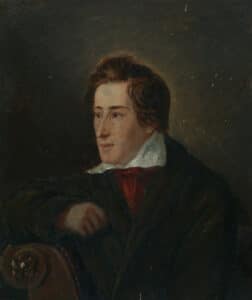
Source: Wikimedia Commons.
Se:
Heine, Heinrich (Leksikon.org). Meget kort intro.
Heinrich Heine (Denstoredanske.dk)
Heinrich Heine (Wikipedia.org) + Heinrich Heine (Wikipedia.de). Større leksikonartikler på engelsk og tysk.
Heinrich Heine Archive (Marxists Internet Archive; Reference writers) + Autobiographical Sketch.
Germany: Heinrich Heine in the ‘Marble Galgotha’. By Sybille Fuchs (World Socialist Web Site, 26 August 2010)
Se også på Socialistisk Bibliotek:
Linkboxen: Oplysningstiden/The Enlightenment




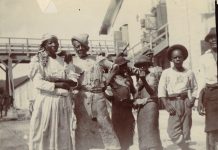
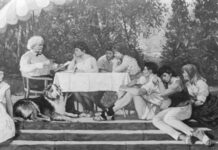

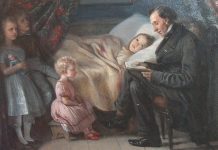
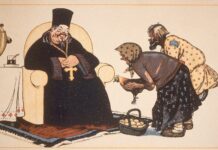
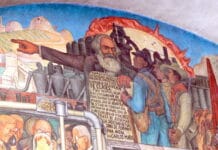






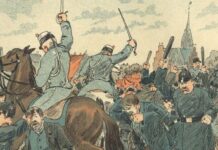
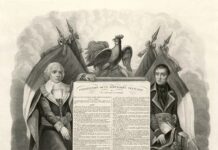
![Illustration to Robert Burns' poem Auld Lang Syne by J.M. Wright and Edward Scriven. The Complete Works of Robert Burns: Containing the Poems, Songs, and Correspondence. Illustrated By W.H. Bartlett, T. Allom, and Other Artists. With a New Life of the Poet, and Notices, Critical and Biographical[1] by Allan Cunningham. Published in London by George Virtue. No year is given explicitly, but "James Gibson 1856" has been handwritten inside the front cover, it's dedicated to a MP, Archibald Hastie of Paisley, who was no longer a MP by 1857, and some of the artists and engravers were dead before 1842. As such, I'm going with c. 1841 as the year, though it could be as late as 1856, when James Gibson evidently acquired. From: The Complete Works of Robert Burns: Containing the Poems, Songs, and Correspondence. Illustrated By W.H. Bartlett, T. Allom, and Other Artists. With a New Life of the Poet, and Notices, Critical and Biographical by Allan Cunningham, London: George Virtue. Drawn by John Masey Wright (1777–1866, artist), Engraved by John Rogers (c. 1808-c. 1888, engraver), Restored by Adam Cuerden (1979–, restorationist), Cropped by Beyond My Ken. Public Domain.](https://socbib.dk/wp-content/uploads/2018/02/John_Masey_Wright_-_John_Rogers_-_Robert_Burns_-_Auld_Lang_Syne_crop-218x150.jpg)
![A demonstration of workers from the Putilov plant in Petrograd (modern day St. Peterburg), Russia, during the February Revolution. The left banner reads (misspelt) "Feed [plural imperative] the children of the defenders of the motherland"; the right banner, "Increase payments to the soldiers' families - defenders of freedom and world peace". Both refer to the economic toll the First World War was having on civilian life, February 1917 (probably around March 7 [O.S. February 22]) Photo: Unknown. Public Domain.](https://socbib.dk/wp-content/uploads/2007/04/1917-februarrevolution2.1500x0-218x150.jpg)



